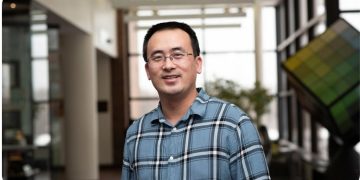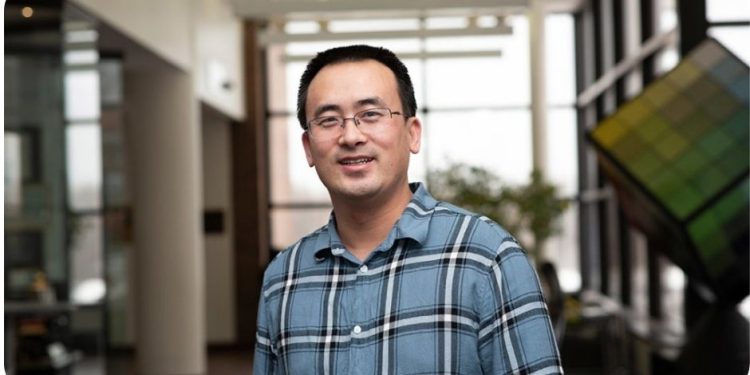A Rochester Institute of Technology faculty member is creating new artificial intelligence systems that could empower agricultural researchers, breeders, nurseries and other users to analyze the roots of their crops with the power of their smartphones.
Guoyu Lu, an assistant professor in RIT’s Chester F. Carlson Center for Imaging Science, is receiving a $450,000 New Investigator grant from the U.S. Department of Agriculture to conduct the research.
According to a news release, the project’s primary goal is to develop a mobile app and platform that can construct 3D models of a crop’s root system and extract important traits about the roots using artificial intelligence technologies. Lu is aiming to create an easy-to-use system that does not require sophisticated and expensive equipment.
“Roots play a central role in plant functions and their interactions with their physical environment,” said Lu. “If we can accurately estimate characteristics such as the root shape, surface area, branching, and angles in orchards, it can help us understand the interaction of plants with their biotic and abiotic environments and to breed resilient crops.”
App users will be able to take a short video with their smartphone and receive an efficient, quick, and convenient analysis that reconstructs 3D root models and determines key traits about the plant. The goal is to eventually create a system that can assess the roots of many different types of crops, but the pilot will focus on two different cases: apples and sweet potatoes.
Over the course of the three-year project, Lu will collaborate with partners including Associate Professor Awais Khan from Cornell University and Professor Arthur Villordon of Louisiana State University, plus undergraduate and graduate students at RIT.
Guoyu Lu, an assistant professor in RIT’s Chester F. Carlson Center for Imaging Science, received a $450,000 New Investigator grant from the U.S. Department of Agriculture to create new artificial intelligence systems that can empower agricultural researchers, breeders, and other users to analyze the roots of their crops with the power of their smartphones. Photo: A. Sue Weisler































